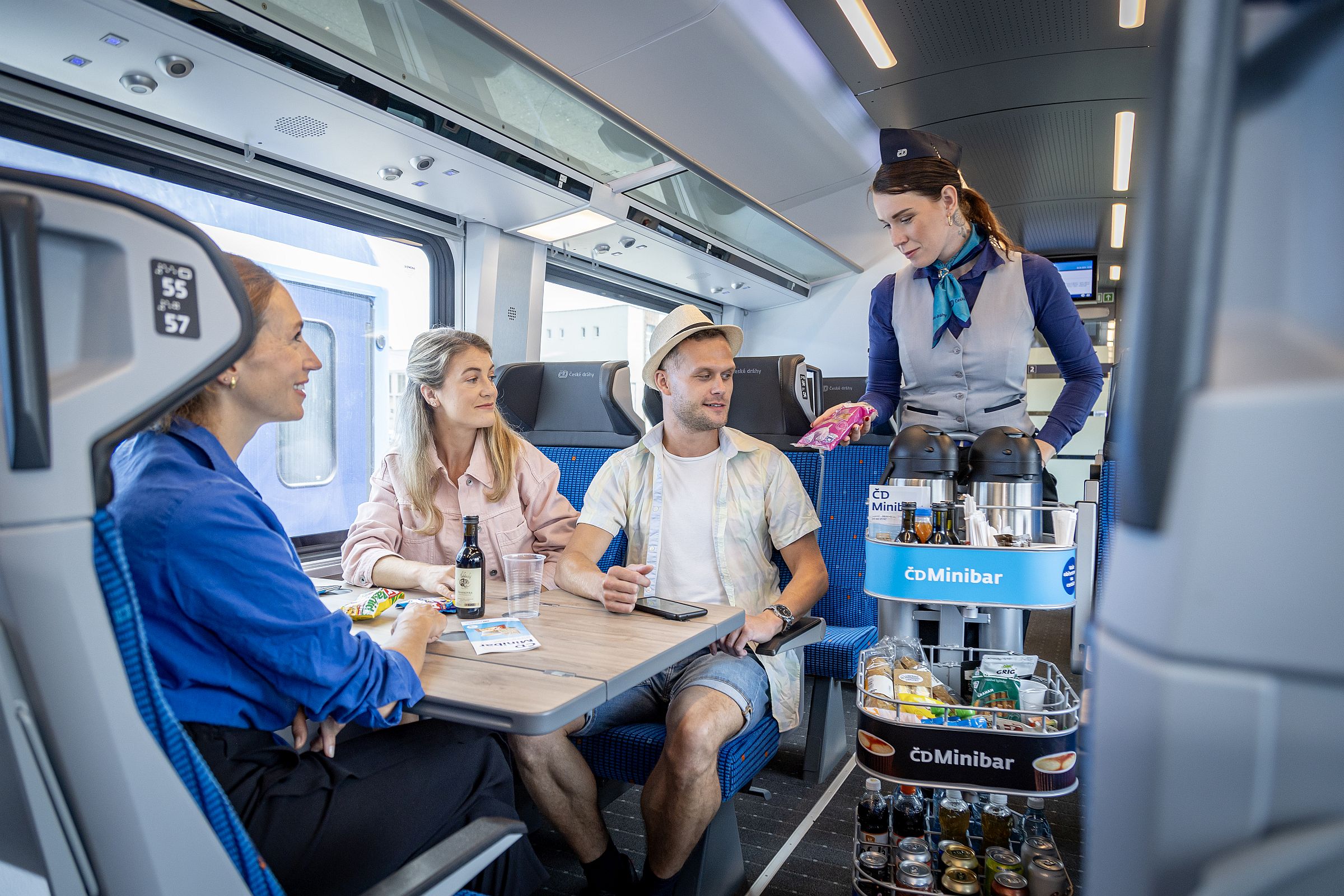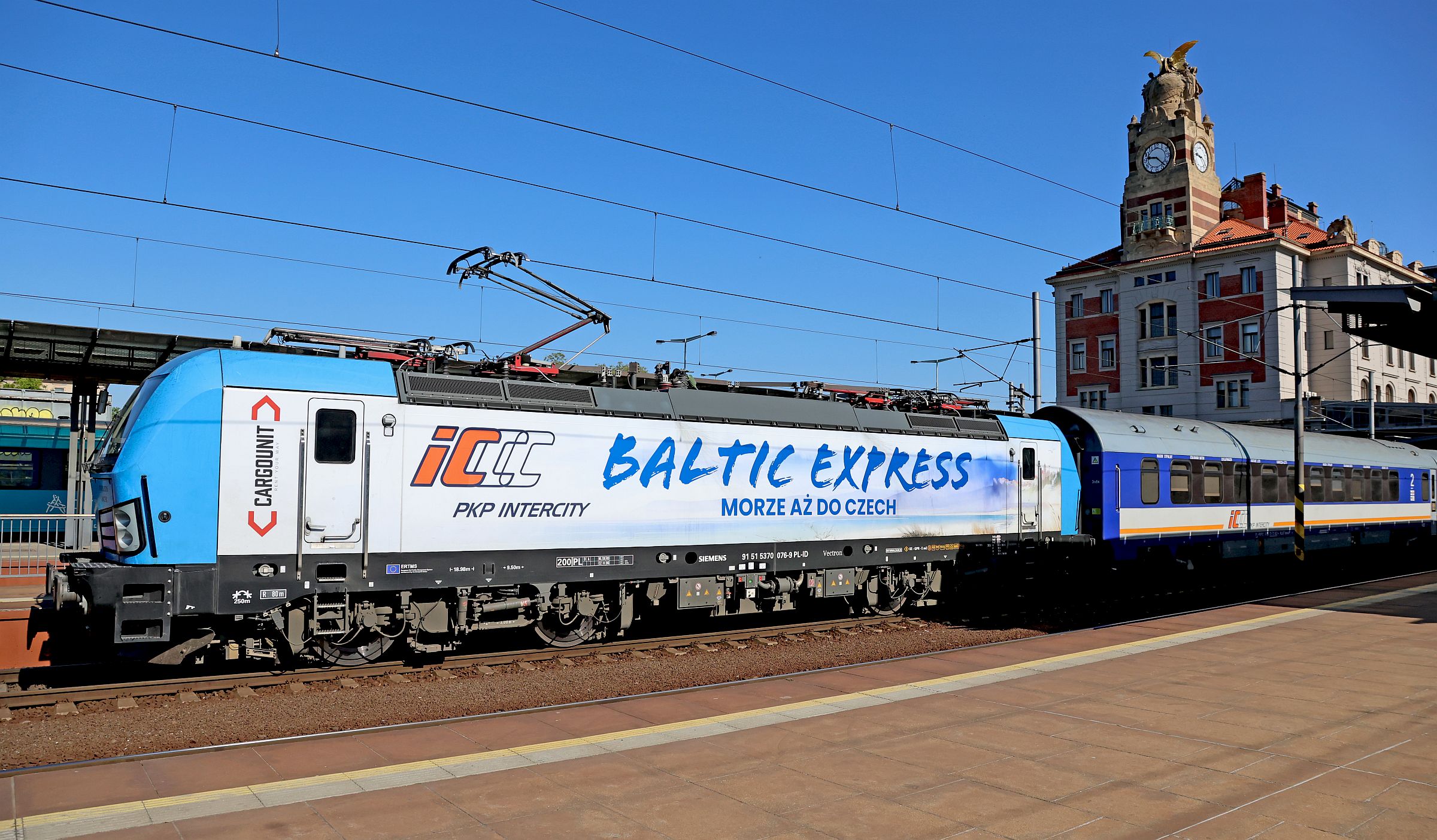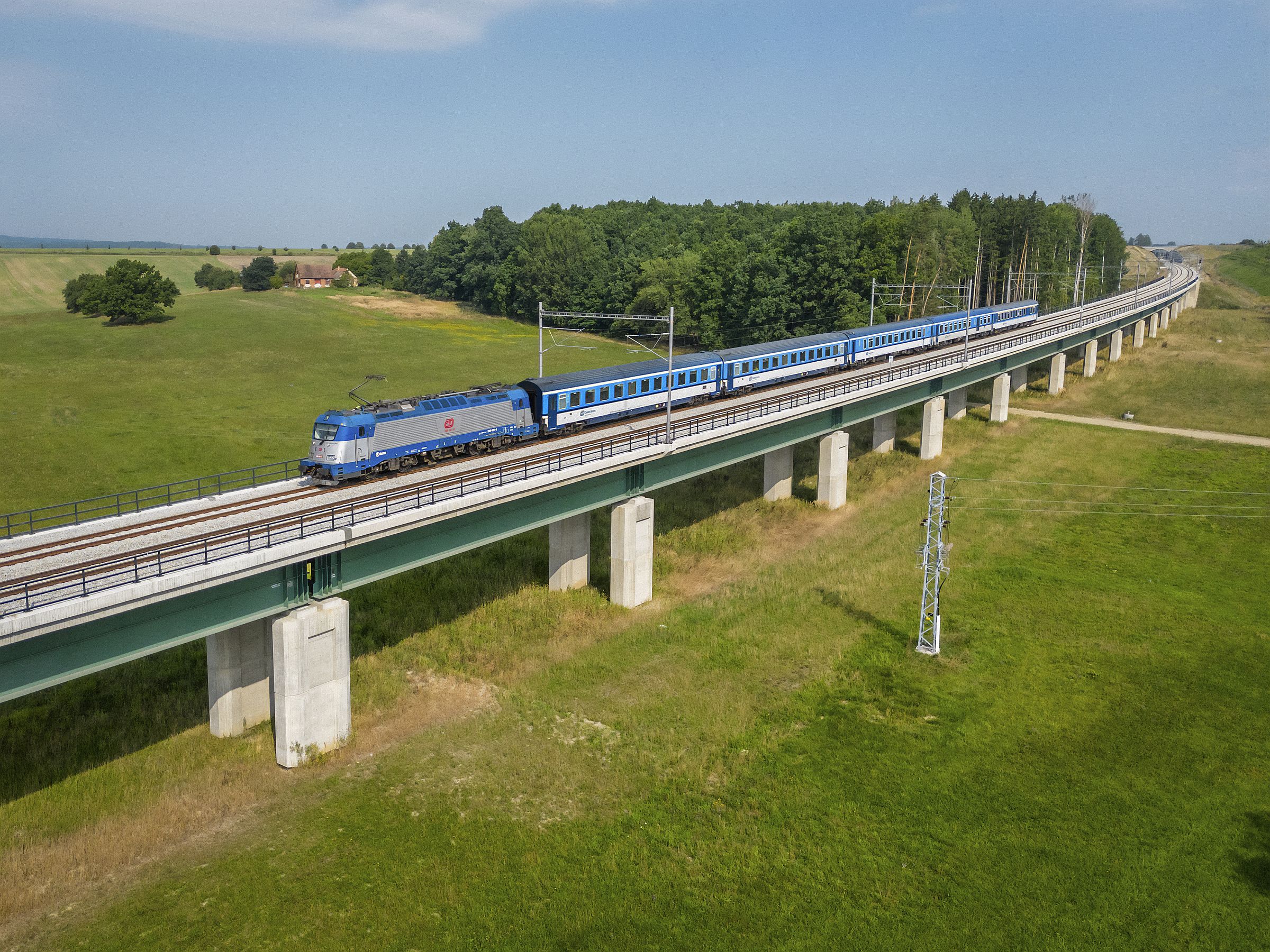The timetable for 2026 will bring further extension of travel offers and increased comfort on international and domestic train services operated by České dráhy. The railjet brand of comfortable travelling will be extended to lines running to Germany, Slovakia and Hungary. Both the original Railjet trainsets and the latest ComfortJet units will be operated under this brand.
The preparation of the timetable for 2026, which will come into effect in Europe on Sunday, December 14, 2025, will bring further improvements to train connections between the Czech Republic and other countries.
“In cooperation with our international partners, we will offer better train connections to Europe in the upcoming timetable for 2026. Beginning in December, our trains will travel as far south as Villach in Austria, which is very close to the Slovenian and Italian borders, and beginning in May of next year, our trains will be operated to Copenhagen. There will be also more trains to Hamburg every day from the month of May. We will deploy higher-capacity ComfortJet trainsets on busy international routes and we will offer modern Railjet and ComfortJet trainsets to our passengers not only on train connections to Austria and Germany, but also to Southern Slovakia and Hungary. To make it clear at first glance from the timetable that the relevant trains are operated by our best trainsets, all of them will be operated in the international Railjet train category,” says Michal Krapinec, Chairman of the Board of Directors and Director General of České dráhy.
In the first half of 2026, the delivery of ComfortJet non-traction units will be completed, and České dráhy will have all 180 modern carriages in 20 trainsets at its disposal. This will allow more modern air-conditioned carriages to run on other lines and expansion of other services on České dráhy trains. Particular cases are presented by Jiří Ješeta, Member of the Board of Directors and Deputy Director General of České dráhy for Passenger Transport: “On the Ex1 line from Prague to Ostrava and further to Poland or Slovakia, most EuroCity and InterCity trains will be equipped with large dining cars, and the Baltic Express train services will include a bistro car with a 2nd class compartment. In addition to the offer of refreshments, we will increase the train capacity by another 40 comfortable seats. Connections in Moravia and to Poland via the Ostrava region will be improved as well. There will be an additional pair of EuroCity trains from Břeclav, Přerov, and Ostrava to Kraków, a new night service between Prague and Przemyśl in Poland will be introduced, and Southern Moravia and the Ostrava region will gain more train services heading for Wrocław and a new direct connection to Poznań. We will allocate more air-conditioned carriages for the R11 Rožmberk and Bezdrev and R20 Labe express trains. On the Labe trains, we will newly provide transport for passengers in wheelchairs.”

Under the railjet brand
From the timetable for 2026, all train services in the railjet train category will be operated by the Railjet trainsets deployed by ČD and ÖBB and by the ComfortJet trainsets. Both types of Czech non-traction units will appear on the Berliner, Vindobona and Metropolitan train services from Prague to Germany, Austria, Slovakia and Hungary. Modern trains will be used also on some transit connections, such as the Budapest – Hamburg / Kiel Hungaria railjet service or Hamburg / Berlin – Vienna / Villach Vindobona trains, as well as on some domestic trains, such as the Brněnský drak service.
More frequent and faster travels with the Berliner trains
A number of innovations await passengers on the Prague – Dresden – Berlin – Hamburg – Copenhagen Berliner line. In addition to the aforementioned extension of two pairs of trains throughout the year and one seasonal pair up to the Danish Capital City of Copenhagen, the offered range of services to Hamburg will be extended. Beginning in May, when the closure of the Berlin – Hamburg railway line ends, all trains, including those which previously terminated in Berlin, will be extended to the port city in northern Germany. Besides, two additional services will be introduced to facilitate travelling in the evening and to make later returns from trips possible. An additional train will depart from Hamburg and Berlin two hours later than at present, namely from Hamburg after 5 p.m. and from Berlin after 7 p.m., with scheduled arrival time at Prague before midnight. In the opposite direction, an evening train from Prague to Dresden will be added, departing from Prague before 9 p.m.
Another positive change will be the reduction of the journey time from Prague to Berlin and Hamburg by several dozens of minutes. The journey from Prague to Berlin will take approximately 4 hours and to Hamburg approximately 6 hours. The ComfortJet trains will use their maximum speed of 230 km/h on the Berlin – Hamburg railway line section, and the Berliner services will be among our fastest trains.
Better train connection to Poland
Further improvements will be made for journeys to Poland. The Prague – Gdynia Baltic express EuroCity trains will be supplemented with a fifth carriage with a bistro section and 2nd class compartment. In addition to the offer of refreshments, this will increase the capacity of the train by another 40 comfortable seats.
There will be a number of innovations concerning the trains travelling to Poland through the Ostrava region. A new pair of EuroCity trains will be added on the Vienna – Břeclav – Přerov – Ostrava – Kraków route, and at the same time, the offer of direct carriages on the Prague – Pardubice – Olomouc – Ostrava – Kraków route will be extended by another pair of train services. The connection between Moravia and the western part of Poland is also being expanded thanks to direct carriages from Vienna via Břeclav, Přerov and Ostrava. These carriages will newly run to Wrocław twice a day, and a completely new direct connection will be established once a day to Poznań.
Night travel offers to Poland are also being expanded and improved. A new pair of the EuroNight Carpatia trains will run from Bohumín to Przemyśl. This night train will carry direct carriages from Munich, Vienna, Prague, and Budapest. At the same time, the Munich – Warsaw Chopin EuroNight train, which includes also direct carriages from Prague, will be rerouted and straightened. It will newly run from Bohumín directly to Warsaw, and passengers will arrive at the Polish capital earlier than under the current timetable.

To Slovakia and Hungary with a railjet trainset
Minor changes await passengers of České dráhy and its partner ZSSK in the direction of Slovakia. Some Metropolitan and Hungaria train services will newly be operated by the Railjet and ComfortJet complete units. These services will be operated in the railjet train category. This will distinguish them from the trains which will still be operated by the classical trainsets of the Slovakia-based company “ZSSK” in 2026, which will continue to be operated in the EuroCity category.
Due to planned extensive railway closures through Horní Lideč between the Czech Republic and Slovakia, the Valašský expres trains will be terminated at the Vsetín station from approximately mid-February until the end of the 2026 timetable. Substitutive bus service will be provided on the Vsetín – Horní Lideč – Púchov / Žilina section.
The Pendolino trains on the Prague – Košice SC Pendolino Košičan service will also return to their traditional route, offering the fastest journey time from Bohemia and Moravia to the Slovak mountains and eastern Slovakia. The returning of the 680 class units to this international line should take place after the completion of the ongoing train modernisation (e.g., installation of a repeater for easier mobile signal reception) and the approval of the ETCS for regular operation still this autumn.
Up to the border of Italy and Slovenia
Major changes are associated with the Vindobona railjet service offer from Prague to Austria. In connection with the opening of the new Koralmbahn railway line between Graz and Klagenfurt, there will be rather extensive modifications to the timetables on the Austrian Südbahn. Three pairs of trains will newly run daily on the Prague – Brno – Vienna – Graz – Klagenfurt – Villach route. Villach is an important hub in southern Austria for further travels to Slovenia and Italy. Carinthia, with its lakes and mountains, is also a popular destination for summer and winter recreation (e.g., Wörthersee, Nassfeld). Direct trains will depart from Prague to southern Austria at approximately 6:37, 10:37 and 14:37 hours, and those departing from Carinthia will arrive at the Prague Main Station at approximately 13:23, 19:23 and 23:32 hours. The journey time between the departure and destination stations will be approximately 8 hours. The Vindobona services to Villach, together with the Berliner services, will be the fastest trains operated by České dráhy and the first real high-speed trains. They will exceed the current maximum speed of České dráhy trains, which is 200 km/h. Czech trainsets will be able to travel at speeds of 230 km/h on the new high-speed, large-capacity Koralmbahn railway line. They will also pass through the 33-kilometre-long Koralm Tunnel, the fourth longest railway tunnel in Europe.
Another innovation will be a later train service connecting Prague and Vienna with a direct Hamburg – Berlin – Prague – Vienna railjet train, which will depart from Prague at around 7:30 p.m., which is approximately one hour later than the current last train from Prague to Vienna.
More trains to Southern Bohemia
The timetable for 2026 will bring more train services between Prague and České Budějovice, which are among the fastest in the Czech Republic with a travel speed of approximately 100 km/h. Specifically, a new pair of InterCity express trains will be introduced on the route with approximate times from Praha hl.n. (7:21 hours, departure) – České Budějovice (8:59 hours, arrival) and České Budějovice (12:58 hours, departure) – Praha hl.n. (14:39 hours, arrival), as well as a new "stopping" fast train České Budějovice (21:10 hours, departure) – Praha hl.n. (23:10 hours, arrival), which will run on working days and Sundays. At the same time, a new later connection will be created between Linz, České Budějovice, and Tábor with Prague, because the current Jižní expres EuroCity 336 train will run an hour later, departing from Linz before 8 p.m. and from České Budějovice at around 10 p.m., with its scheduled arrival at Prague before midnight.

Some other lines will be affected as well. Selected Prague – Havlíčkův Brod – Brno Vysočina express trains will have different timetables on working days and weekends due to the railway line modernisation and planned closures. According to the plan, the R11 A and R11 B line Rožmberk train services will be divided into two separate partial lines in České Budějovice, namely: Plzeň – České Budějovice and České Budějovice – Jihlava – Brno. However, most of the services will remain in the 2026 timetable without transfers in the form of direct carriages. More air-conditioned carriages with Wi-Fi connectivity features will be allocated to trains on the R11 A and R11 B Rožmberk and Bezdrev lines and to the R20 Prague – Děčín Labe line. The introduction of transport for wheelchair users is planned on the R20 Labe line.
Changes are also planned for transit trains between the Ex3 and Ex5 lines from Budapest and Vienna to Berlin and Hamburg. In addition to expanding the offer by one more pair of direct trains on the Germany – Czech Republic – Austria route, all pairs of these train services will run via the Praha-Holešovice station and will not stop in the capital city centre at the Prague Main Station.
We will provide information about news in the regional transport system in the form of press releases at the usual time at the end of November / beginning of December.